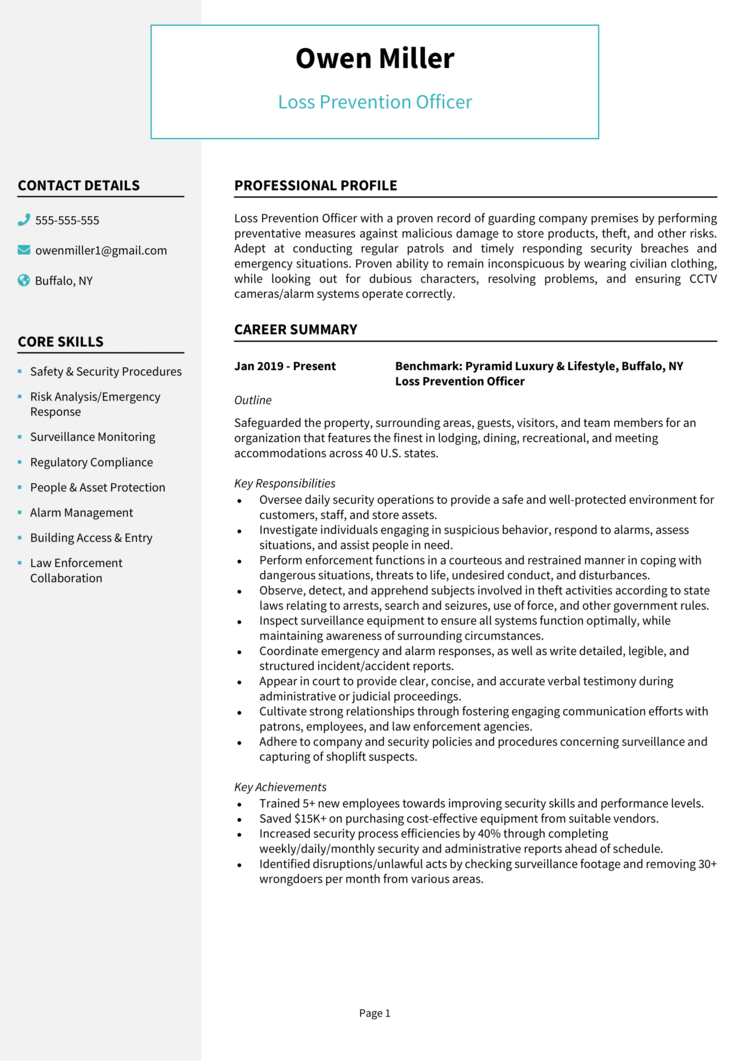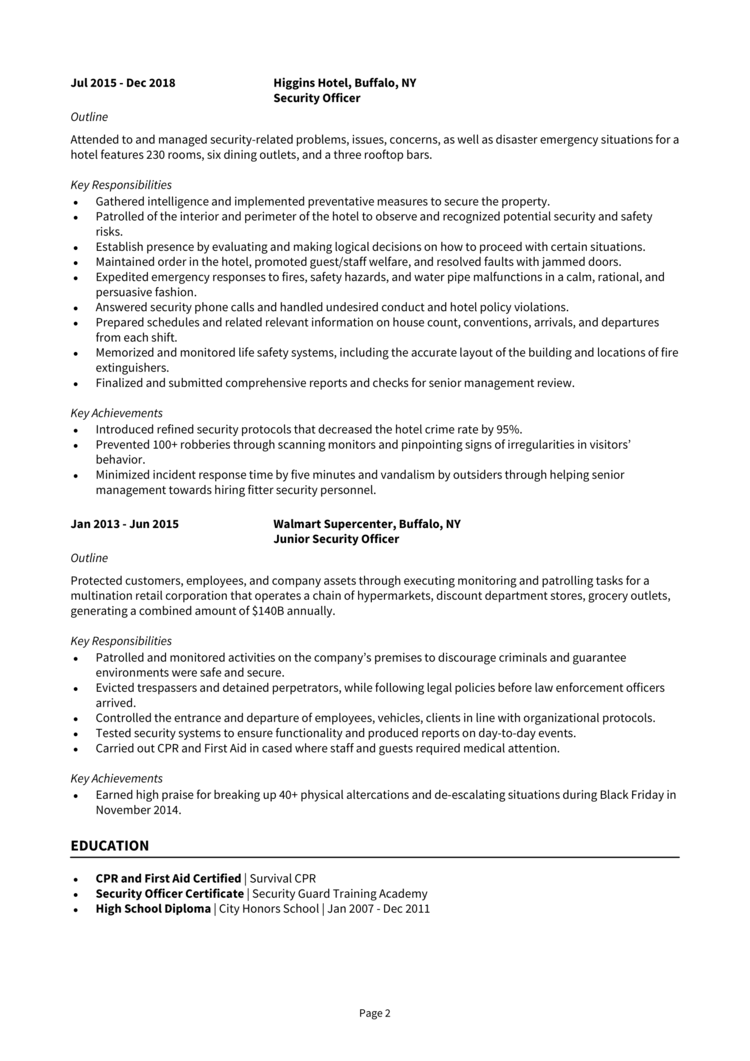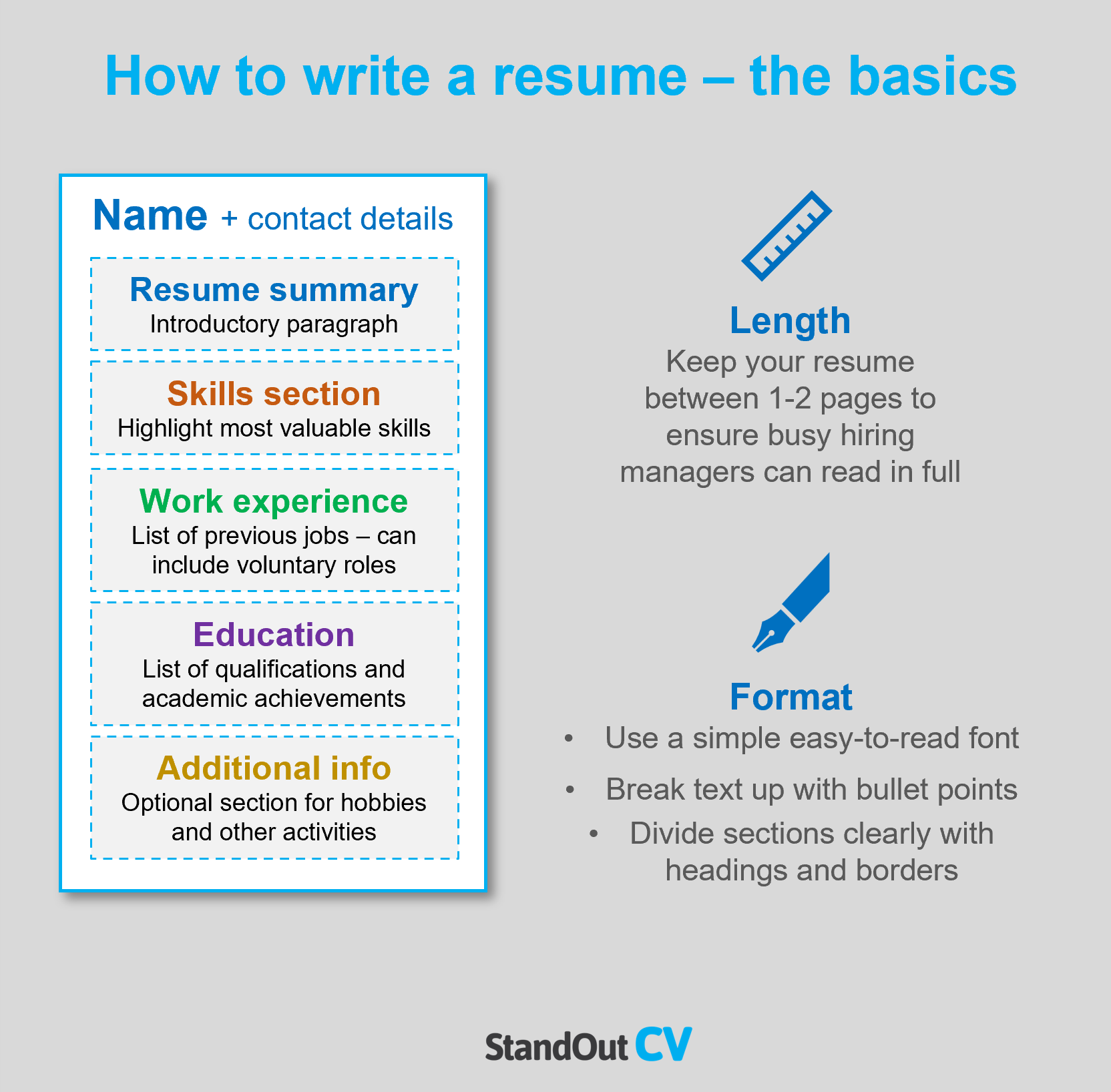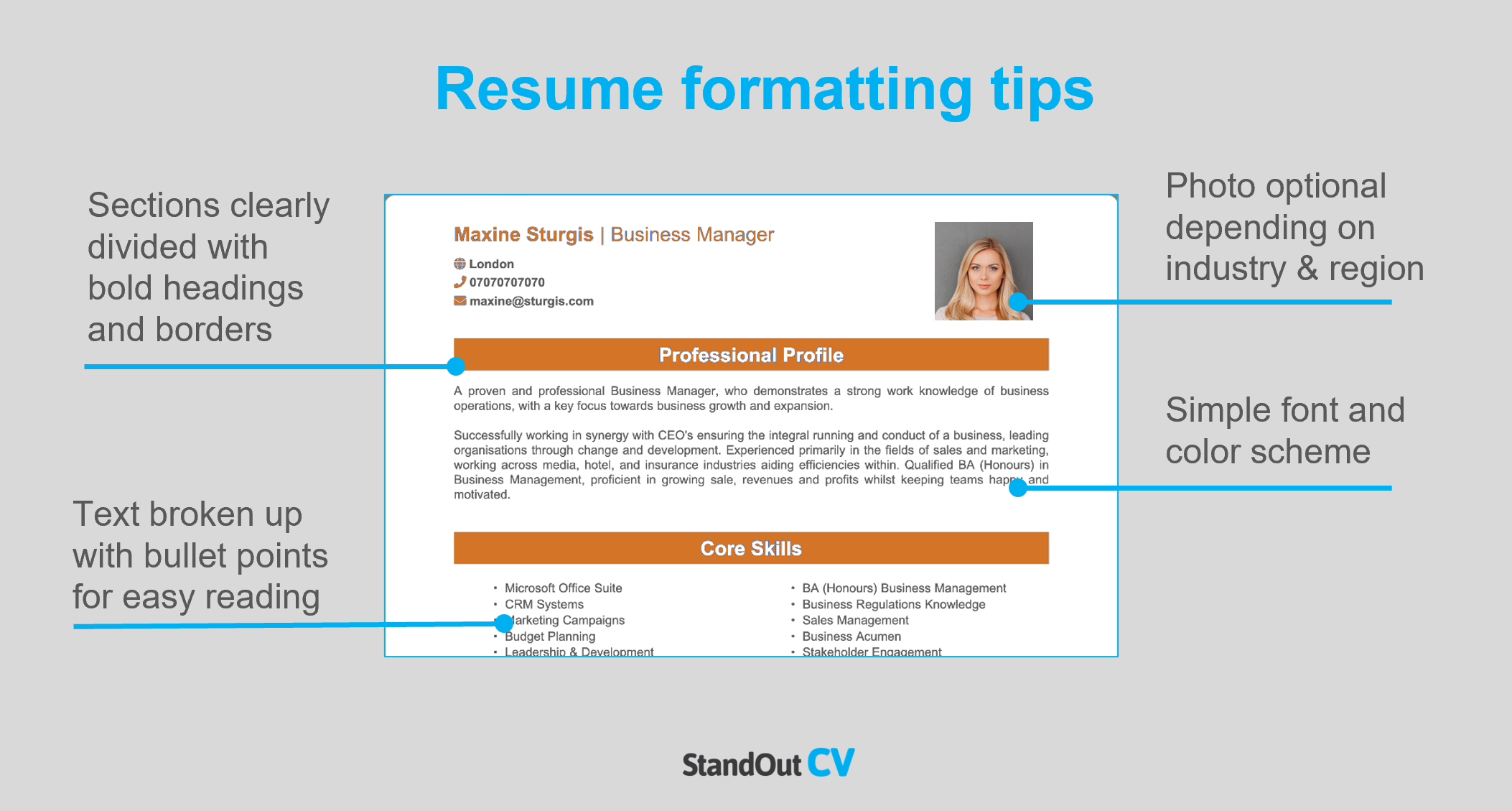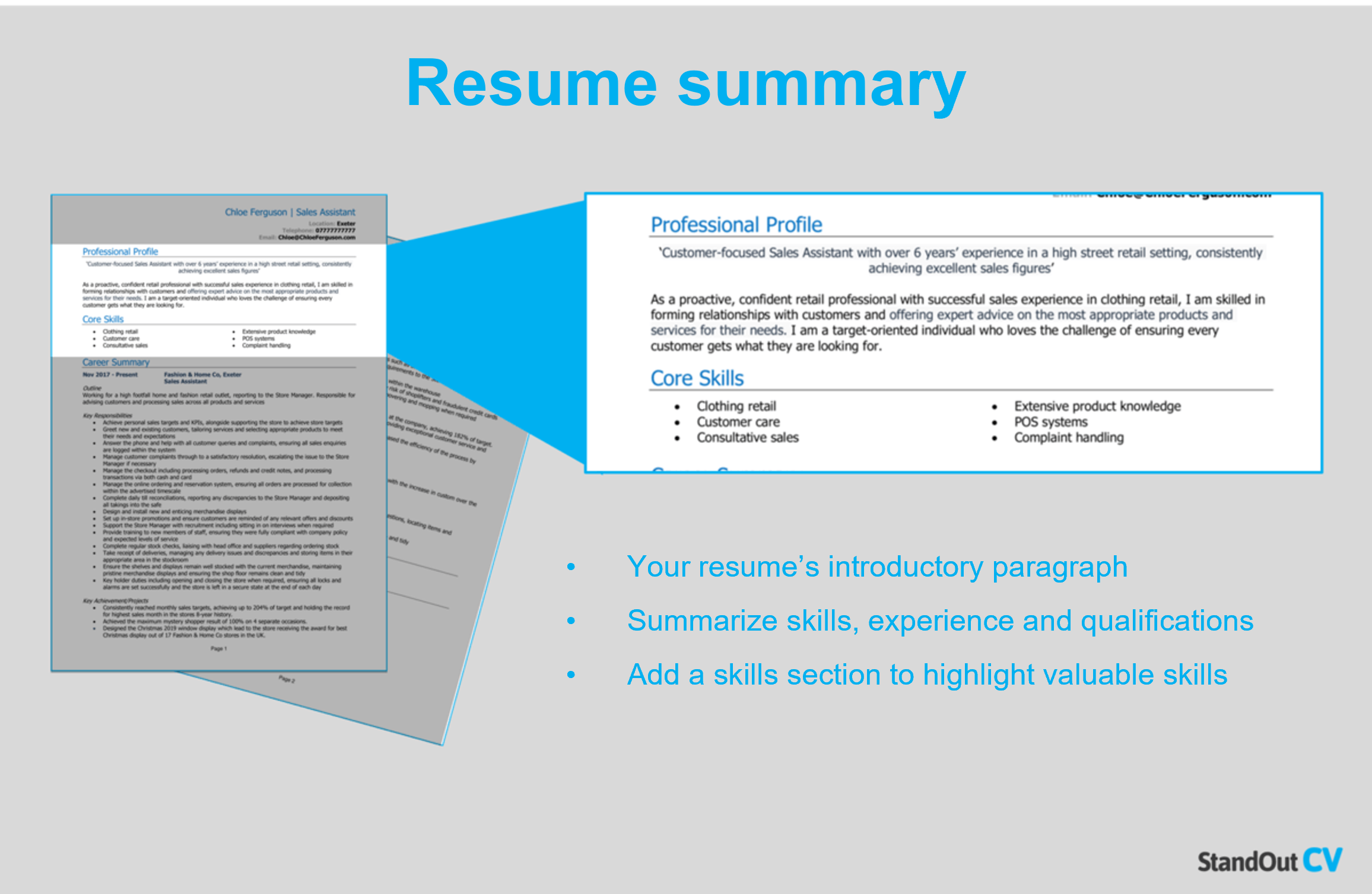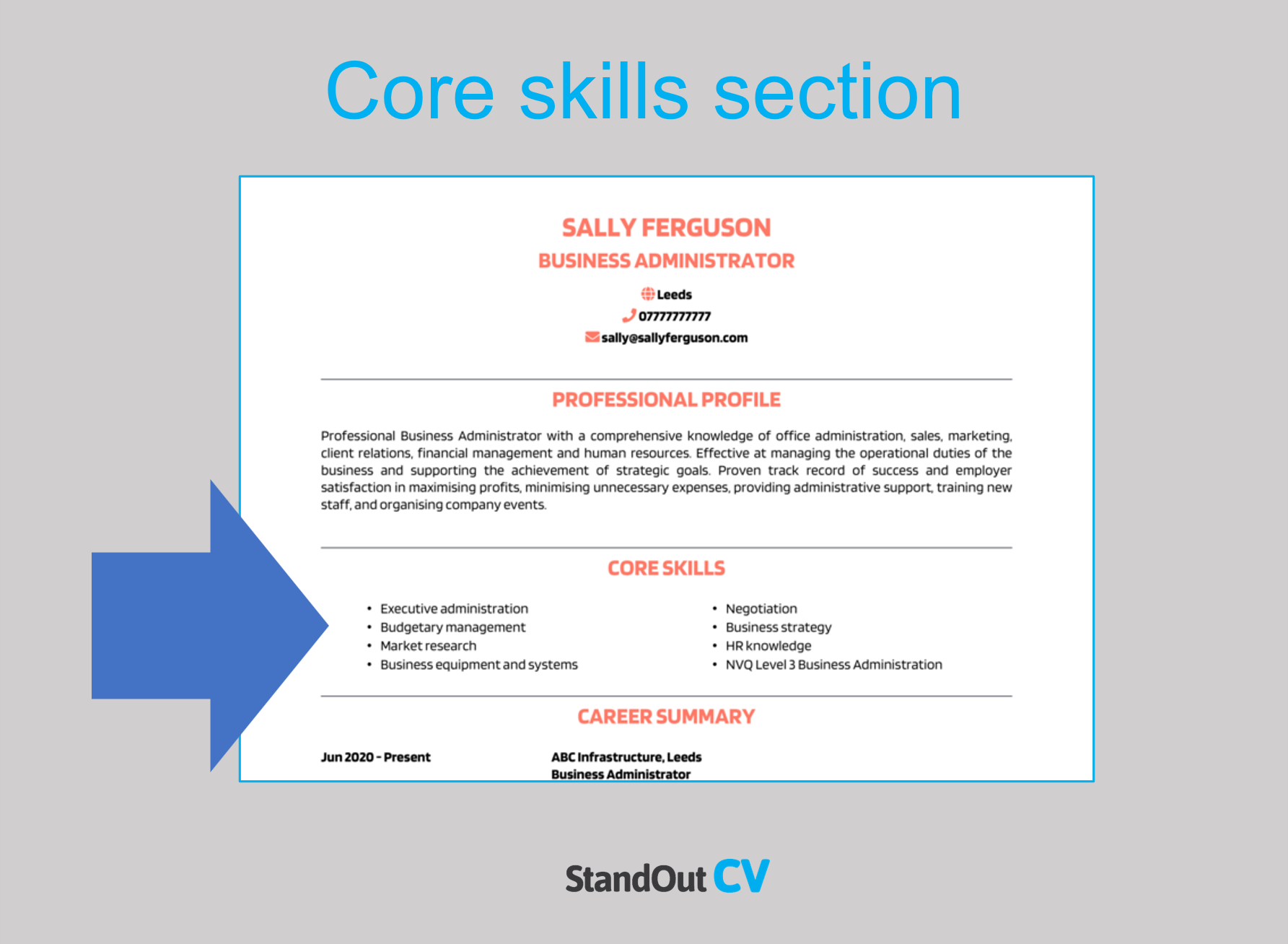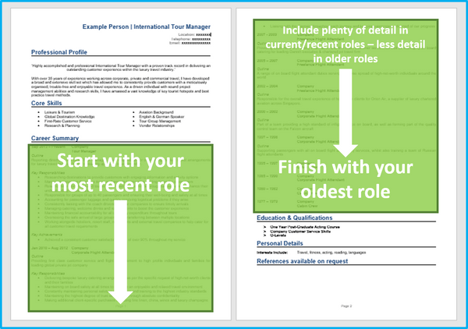You’re a security whizz, and nothing gets past you. This makes you perfect for identifying threats and preventing the theft of inventory or money.
This is something that business owners take seriously; therefore, they want someone they can trust to implement the best strategies and systems.
To prove you’ve got what it takes, you need a killer resume, and you can find out how to create this using our loss prevention officer resume example and guide below.
Guide contents
|
Loss Prevention Resume Example
The example Loss Prevention Officer resume above shows you how a professional resume should look, along with the type of content it should contain.
You can see that the information is well-organized across the page, and its easy for busy recruiters to see the candidate’s important skills.
Keep this in mind when writing your own resume.

Loss Prevention resume layout and formatting
When it comes to holding the attention of recruiting managers, the format and layout of your resume play a key role.
Your resume needs to strike a perfect balance between looking awesome, and being easy for recruiters to read (which is not always easy to achieve)
Use the following formatting tips to get started.
How to format your resume
- Length: Think that submitting a 10 page resume will impress recruiters? Unfortunately it won’t… Even if you’ve got tons of experience to brag about, recruiters don’t have time to read essays, so keep it brief – around 2 pages is the sweet spot.
- Font & text: Nobody likes to read huge unbroken paragraphs of text – and recruiters are no different. Break your resume text up with bullet points and use a clear simple font.
- Design & layout: Hiring managers should be able to skim through your resume easily and pinpoint the information they want quickly. To help them do this, organize the page into clear sections with bold headings and dividing borders. The design should be clutter-free and professional-looking, with a calm color scheme.
- Photos: You don’t have to add a photo to your resume in the States, but some regions and industries like to see them.
Quick tip: Achieving a professional look for your resume can be difficult and time-consuming. If you want to create an attractive resume quickly, try our quick-and-easy Resume Builder and use one of their eye-catching resume templates.
Resume layout
Include the following sections when you write your resume.
- Name and contact details – Make it easy for employers to contact you, by putting these at the top.
- Resume summary – An intro paragraph sitting at the top of your resume, summarizing the reasons why you should be hired.
- Skills section – A short snappy list of your most important skills, that can be quickly digested
- Work experience – Reverse chronological list of your previous jobs – voluntary work and college placements can be included if you have no paid experience.
- Education – List your qualifications and professional training.
- Additional info – An optional section for things like hobbies and interests.
Here’s what you should include in each section of your resume.
Resume Contact Details
Keep your contact details short to save resume space and include the following.
- Name and profession title
- Cell phone number
- Location – Add your local area such as Silicon Valley or New York, unless you are looking for work in a different location
- Email address – Keep it professional and don’t use an old address that you thought was cool in high school, but now looks a bit embarrassing.
You can add a link to your LinkedIn profile if you have one – you do not need to include personal details like date of birth or marital status.
Loss Prevention Resume Summary
Your resume summary is like your introduction to the recruiter or hiring manager – it should grab their attention and leave them eager to read more about you.
Achieve this by writing a snappy overview of your skills, knowledge and what value you can bring to an employer.
3 tips for creating a resume summary that will get noticed:
- Keep it concise: Aim for a short punchy paragraph of 4-7 lines. This is just enough info to showcase why you’d make the perfect hire, without going into excessive detail and overwhelming busy recruiters at such an early stage in the resume.
- Tailor to target jobs: Ensure your profile makes an impact by matching it closely to the requirements of the job description, copying as many key terms as possible.
- Don’t use cliches: You may be a “team player who always give 110%” but generic phrases don’t tell employers much about you in reality – stick to factual information.
Example resume summary for a Loss Prevention Officer
What info to include in your Loss Prevention resume summary?
- Summary of experience: Summarize the type of work you have done in the past and the benefits you have delivered for the organizations you worked at.
- Relevant skills: Highlight your skills which are most relevant to jobs in Loss Prevention, to ensure that recruiters see your most in-demand skills as soon as they open your resume.
- Vital qualifications: Showcase your level of education with a quick mention of any qualifications that are essential for the Loss Prevention roles you are applying to.
Quick tip: Choose from hundreds of pre-written summaries across all industries, and add one to your resume with one-click in our quick-and-easy Resume Builder. All written by recruitment experts and easily tailored to suit your unique skillset and style.
Core skills section
In addition to your resume summary, your core skills section provides an easily digestible snapshot of your skills – perfect for grabbing the attention of busy hiring managers.
As jobs in Loss Prevention might receive a huge pile of applications, this is a great way to stand out and show off your suitability for the role.
It should be made up of 2-3 columns of bullet points and be made up of skills that are highly relevant to the jobs you are targeting.
Top skills for your Loss Prevention resume
Safety & Security Procedures – following established procedures and best practices to ensure the safety and security of people and property.
Risk Analysis/Emergency Response – analyzing potential risks to people and property and implementing appropriate mitigation plans to minimize those risks, alongside providing rapid response to emergency situations where risks have occurred.
Surveillance Monitoring – utilizing surveillance systems such as CCTV to monitor the safety of people and property.
People & Asset Protection – preventing loss to people and property caused by theft, fraud or physical harm.
Building Access & Entry – managing who can gain access to the building (or areas within the building), ensuring only authorized personnel are able to gain entry.
Quick tip: Our quick-and-easy Resume Builder contains thousands of in-demand skills for every profession that can be added to your resume in seconds – saving you time and greatly improving your chances of landing job interviews and getting hired.

Resume work experience section
Now that you’ve reeled recruiters in with your awesome summary, it’s time to delve into your work experience.
Here you’ll list your previous jobs (starting with your most recent and working backward) and showcase how you apply your skills in the workplace.
Provide lots of detail in recent jobs, and less in older roles.
If you have no relevant paid experience, you can include voluntary work and placements – but if you have lots of experience, you can leave out some of the really old jobs.
Structuring your job descriptions
You probably do a lot in your job, so its vital to break all of that information down into a good structure.
Structure your jobs as follows to make it easy for recruiters to skim through and pinpoint the essential info.
Job outline
Start with a 1-2 sentence outline of the role, summarizing what the goal of your position was, who you reported to (or managed) and the type of organization you worked for.
Key responsibilities
Then delve into the detail of your job by listing out easy-to-read bullet points which show how you apply your skills in the workplace.
Tailor these bullet points to focus on the skills and knowledge that are required in the jobs you are applying for.
Key achievements
Finish each role by highlighting some impressive achievements you made whilst in the role.
Anything that benefited the employer can be included from making financial savings, to winning new customers.
Quantify your achievements with facts and figures if you can, e.g. “reduced call wait time by 10%”
Example job for Loss Prevention resume
Outline
Safeguarded the property, surrounding areas, guests, visitors, and team members for an organization that features the finest in lodging, dining, recreational, and meeting accommodations across 40 U.S. states.
Key Responsibilities
- Oversee daily security operations to provide a safe and well-protected environment for customers, staff, and store assets.
- Investigate individuals engaging in suspicious behavior, respond to alarms, assess situations, and assist people in need.
- Perform enforcement functions in a courteous and restrained manner in coping with dangerous situations, threats to life, undesired conduct, and disturbances.
- Observe, detect, and apprehend subjects involved in theft activities according to state laws relating to arrests, search and seizures, use of force, and other government rules.
Quick tip: Create impressive job descriptions easily in our quick-and-easy Resume Builder by adding pre-written job phrases for every industry and career stage.
Education section
Near the end of your resume add your education section
Experienced candidates should keep it brief and focus on professional qualifications – and junior candidates can include high school diplomas, college degrees etc.
Additional information
The additional info section is optional but can be useful if you have anything else to add that could benefit your application.
For example, you may have some hobbies and interests that are relevant to your job – or you might have awards or publications to shout about.

Writing your Loss Prevention resume
A winning Loss Prevention resume should look great, read well, and sell your skillset to hiring managers.
If you follow the steps above, you should be able to bag yourself a top job in no time.
And don’t forget you can use our quick-and-easy Resume Builder if you want to save time and ensure your resume contains the very best content.
Good luck with your job search!
